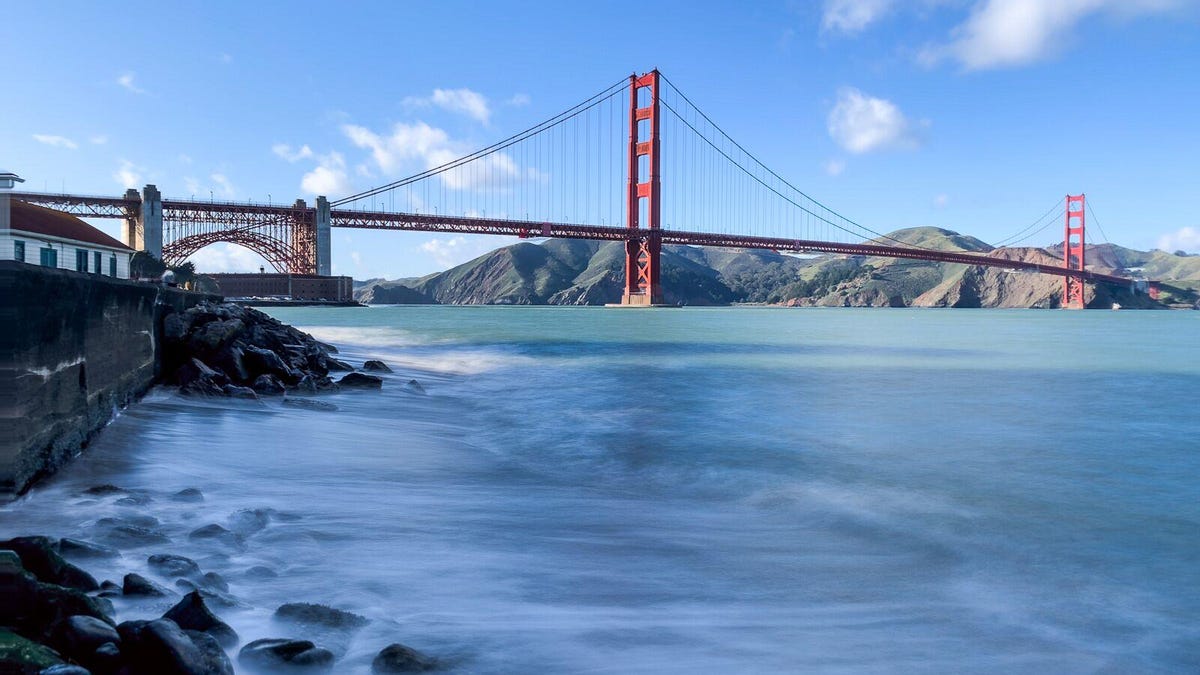Spectre app for iPhone uses AI to create better long-exposure photos
Capture light trails, silky flows of water and remove crowds of people from a popular locale.

Here's a long exposure of the Golden Gate Bridge in San Francisco. Notice how the water looks like silk.
Last October, I did a camera comparison between a then-new iPhone XS and the Galaxy Note 9. As part of it, I wanted to take long-exposure photos of a car's taillights streaking through the night. I put the Note 9's camera into Pro Mode, lowered the shutter speed and took a few snaps. Even after tweaking the ISO and exposure compensation, I couldn't get the results I wanted. The iPhone XS with its Live Photo long-exposure mode didn't do much better.
Thursday brings a new iOS app called Spectre that can take a simulated long exposure photo by combining hundreds of shots taken over 3 to 9 seconds. It can create light streaks from a car at night, make flowing water look like silk or remove crowds of people from a popular locale. The app is made by the same guys who made the photography app Halide.
Spectre's special sauce comes in the form of computational photography similar to what's used in Night Sight on the Pixel 3 or Portrait Mode on the iPhone. Specifically, the app uses AI, machine learning and algorithms to simulate a long-exposure photo -- also known as slow-shutter photography.
Here are two photos I took with an iPhone XS. The one on the left was taken with the default camera app. The one on the right is a 9-second exposure taken with the Spectre app.
I had Spectre for a few days and was impressed with how simple it is to use. There isn't an overwhelming amount of options or tools to navigate through. It can auto-detect and switch between modes for light trails, nighttime cityscapes or light painting. One of the best features is seeing your photo build in real time. All photos are saved as a Live Photo JPEG file making it possible to view the build after the fact.
Here you can see the progression of light trails created with the Spectre App.
There is a small real-time icon that shows how much your phone is shaking. It's a nice visual reminder to help you steady your iPhone when a photo is being taken.
But Spectre isn't the only app to simulate long-exposure photography. Adobe Lightroom CC for iOS and Android features a long-exposure mode as part of a "Technology Preview" that you can enable. And then there's the iOS app Slow Shutter Cam that offers a slew of controls for long exposures as well as an additional intervalometer mode.
Spectre's straightforward interface mixes a minimal look with typeface and controls that are influenced by an actual camera. Spectre is available Thursday for the launch price of $1.99. The price will increase after the app's initial release. No word if an Android version is in the works.

